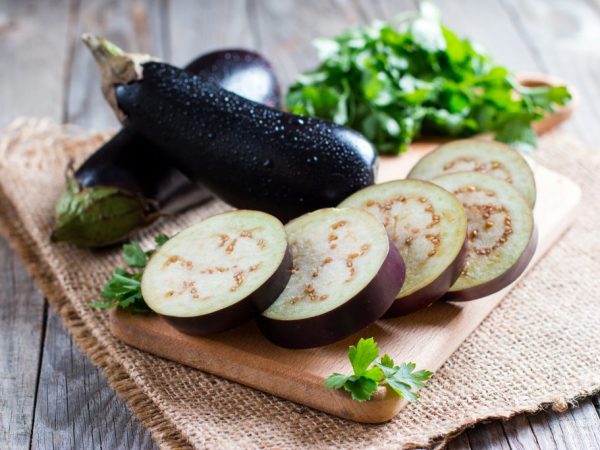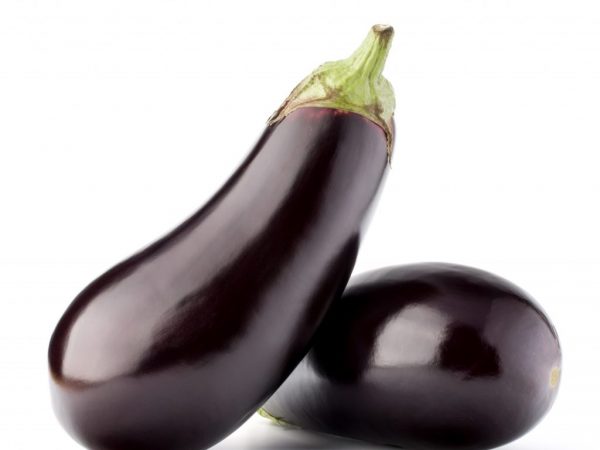Eggplant varieties for the Urals
The Ural climatic conditions are harsh and unfavorable for many southern cultures. But the cultivation of eggplants in the Urals became possible thanks to the efforts of breeders. You can grow a vegetable only by adhering to the rules of agricultural culture.

Eggplant varieties for the Urals
The best varieties for the Urals
First, choose suitable varieties of eggplant for the Urals. Early ripening crops grow successfully, which grow in 90-120 days from the beginning of germination. It is also recommended to plant medium early vegetables, ripening within 140 days.
In this region, the most common early maturing variety Quartet, it is easiest to grow in unfavorable climates. It is grown outdoors. The crop is harvested after 107-122 days of ripening. Spreading bush, reaches 60 cm with small pale purple leaves. Fruits are green-purple, shortened, pear-shaped, matte. In length they reach 15 cm. Diameter - up to 7 cm. The pulp is light green in color, medium in density. Productivity - up to 20 kg from 10 m2.
In the Urals, other early eggplants are also suitable for growing:
- Delicacy 163;
- Donetsk fruitful;
- Dwarf early 921;
- Overseas;
- Early maturing 148;
- Czech early;
- Station wagon.
Their bushes are medium-sized - up to 60 cm, in most cases branched. Each ripens 10-15 blue with a total weight of up to 2 kg. They are medium-sized - 100-150 g, different shades of purple, pear-shaped or cylindrical in shape. The pulp is of medium density from white to white-green. Vegetables without bitterness, have high taste.
Growing seedlings
Before planting, the seeds are prepared. Disinfection is carried out with 1% potassium permanganate for 20-30 minutes.
After that, they are kept for 2 hours in a solution of trace elements. This helps the sprouts to sprout faster. The procedure does not apply to purchased processed beans.
Seedlings of the culture are unstable to transplantation, therefore, they plant seeds immediately in spacious individual cells with drainage holes. They use glasses, plastic bottles, pots, cassettes.
Before sowing, they are filled with earth and watered. 1-2 seeds are lowered to a depth of 1 cm, covered with soil, watered a little. In the future, watered as the soil dries up at the root, but only with warm water of 25 ° C.
It is necessary to grow seedlings under a film, which is left until shoots appear. The room temperature is maintained at least 25 ° C.
After the seedlings sprout, the air is cooled to 17-18 ° C. This is necessary for hardening the seedlings, this will allow them to grow strong plants.
Planting and leaving

Eggplants are planted with seedlings
The technologies for planting crops in open land and in a greenhouse are similar. From the boxes, the seedlings are transplanted into soil fertilized with peat, humus 1 cm deeper than in the boxes. From above, the soil is compacted and watered. Soil temperature should be above 15 ° С, air temperature - not lower than 18 ° С.
Seedlings are watered once a week. After the appearance of fruits, watering is carried out 2 times a week.
Harvested in the period of technical ripeness. This means that the actual characteristics of the fruit match the description of a particular variety.
Greenhouse
Vegetables are planted in greenhouses in the second half of February - the first half of March. As the plants grow, the optimum air temperature should be: 25-27 ° C during the day, 16-18 ° at night. For measurements, 2 thermometers are used: near the soil and under the roof of the greenhouse.
In the greenhouse, the culture is planted in 1 row. The distance between the seedlings should be 45 cm. They practice staggered planting. In this case, 60 cm are kept between the bushes. The culture is photophilous. She needs bright natural light 12 hours a day.
Supplemented with fluorescent or phytolamps. They are placed above the bushes at a height of 50-60 cm.
On the hottest days in the south of the Urals, vegetables need protection from direct sunlight. For this, a loose light fabric is thrown over the greenhouses.
Gardeners recommend sticking to low air humidity and high soil moisture in bags. Watering is carried out early in the morning. The soil is mulched and the greenhouse is ventilated to minimize fungal diseases.
In the greenhouse, the culture grows several times higher than in the open field. She is tied to a trellis. Greenhouse eggplants are harvested in June.
Open ground
Seedlings are planted in mid-May and early June. Zamorskiy, Universal, Quartet varieties are suitable.
Gardeners use their own seedlings. It takes root well without cover, and as practice shows, such bushes are much stronger and more fertile.
Crop rotation is of great importance. You need to grow eggplants next to other nightshades: potatoes, peppers, tomatoes, but not after them. The best predecessors of the vegetable are legumes, carrots, pumpkin.
It is better to plant seedlings not too sparsely. Maintain a distance of 30-35 cm between bushes and 50-60 cm between rows.
Unlike a greenhouse, where they mainly use ready-made mineralized soil, in an open field, the culture especially needs mineral fertilizers:
- nitrogen - for the growth of the vegetative system;
- phosphorus - for flowering, the formation of ovaries;
- potassium - for the growth of fruits, strengthening the immunity of the plant.
After the fruits appear on the bushes, 10-15 best eggplants are left. Harvested in August - early September, but always before the onset of frost.
Conclusion
Growing whimsical heat-loving eggplants in the Urals is a laborious process. The main thing is to choose the right early variety. Gardeners mainly grow vegetables in greenhouse conditions. For many of them, southern culture has become not just a miracle of the Ural garden, but also a source of income.


